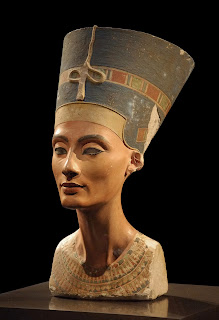One of the interesting things about Ancient Egypt is that women could become powerful. Although not viewed as being the equal to men, many women overcame this and even became Pharaohs.
Determining the women who ruled Ancient Egypt is more complicated than it sounds for a variety of reasons. Often the mentions and even monuments of female Pharaohs were destroyed by their later successors. There are many reasons for this, but a prominent one is a matter of national pride and identity. A woman to rule Egypt was so drastically different from their tradition and culture, and thus the evidence of such an incident was often obliterated in later years.
Despite that, there is evidence, however scant, that there were at least seven women who were Pharaohs, although many things about them are widely and fiercely debated among Egyptologists.
One of the most famous female Pharaohs is Hatshepsut, who ruled in the eighteenth dynasty in the New Kingdom. She was the first woman to assume the title of Pharaoh, and certainly among the greatest. She became the king when her husband and half-brother (Thutmose II) died. Thutmose II left a son (by another wife) named Thutmose III, but as he was still too young to become king, Hatshepsut took over, and eventually decided to become a Pharaoh.
Among Hatshepsut’s accomplishments was a trading expedition to the ancient land of Punt (believed to be modern day Somalia), which was very successful and brought back many items, such as different kinds of trees and wood, exotic incense, ivory, and more. Hatshepsut also built a temple now refered to as Deir El-Bahari, who is often mentioned as one of the greatest temples in all of Egypt.
After Hatshepsut, but still in the same dynasty, a woman named Nefertiti was the queen, married to King Akhenaten. Akhenaten's time was a strange one for the kingdom because he completely changed the traditional religion of Egypt. In his twelfth year of reign, Nefertiti disappears from the records. Some believe she died, others that she became co-regent with her husband under a different name (Neferneferuaten). It has even been suggested that she ruled after him, as a sole ruler. But all of this has never been fully proved.
Of course, among the most famous female Pharaohs of all is Cleopatra VII, who was the last Pharaoh who ruled Egypt as an independent nation. She was not actually Egyptian, but Greek, who ruled at the very end of the Ptolemaic dynasty. In a war with Rome she was overpowered, and choose to kill herself by the bite of an asp (so the story goes) rather than let her enemies kill her.
There have been many famous and strong women from Egypt, which is a stark difference from many other ancient civilizations. Ancient Egyptian women were powerful, and many even rose to assume the little of Pharaoh.
 |
| This is a bust of Hatshepsut. |
 |
| This is Deir El-Bahari, the temple Hatshepsut built. It has been restored, and so only 25% of the structure is original. |
 |
| This is the famous bust of Nefertiti. |
 |
| This is a bust of Cleopatra (which is not done in the traditional Ancient Egyptian style, Cleopatra being a Greek from a long legacy of Greek rulers). |
I was hoping the post would end with Pharaoh Kate as #8!
ReplyDelete